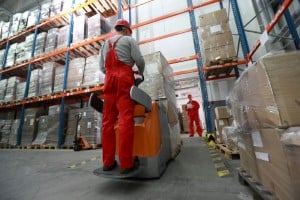 I am looking for some best practice information on the allocation of warehousing costs to COGS. Right now we write off warehouse costs each month - we are a small manufacturer that keeps inventory in our warehouse and pay for warehouse staff to assemble products for shipment. The assembly is mostly of finished product into configured packaging or just into a specific case pack requested. Should we alloate the cost of the overhead in the warehouse to COGS or inventory value?
I am looking for some best practice information on the allocation of warehousing costs to COGS. Right now we write off warehouse costs each month - we are a small manufacturer that keeps inventory in our warehouse and pay for warehouse staff to assemble products for shipment. The assembly is mostly of finished product into configured packaging or just into a specific case pack requested. Should we alloate the cost of the overhead in the warehouse to COGS or inventory value?

Accounting For Warehouse Costs and Cost of Goods Sold
Answers
Hi Susan,
Just to get the facts clear, I want to ask you a question:
- does your staff merely "pack" your inventory or "assemble" goods? That will make all the difference.
If they only "pack", then those costs would be in the nature of selling costs and would be expensed.
 4
4
Proformative offers 400+ business courses with free CPE, many on
Sarah, thanks for the link to
Hi Ankur- they pack them...do not not assemble finished goods.
What if we are storing inventory and the overhead associated with that? Labor, warehouse rent, forklift maintenance, etc... Couldn't that be considered part of the product cost and should be charged above the Gross Margin line?
1) Warehousing falls under 'storing' activity and is not included in inventory cost - best to expense it as incurred.
2) Would it be better to call your costs as 'Costs of Sales' rather than Cost of Goods Sold? Would that give a better meaning?
3) To share some good practices with you , Walmart and Kohl's include warehousing in SG&A (with minor exceptions). Would be useful to refer to their 10ks for guidance - especially Kohls - in its Notes to Financials, Kohl's spells out exactly what is included in COS and SG&A.
4) From experience, its best to frame your policy, discuss with your auditors and be consistent.
Best
Ankur
Agreed with Ankur so long as they are only packing products to ship (which is a shipping or logistics expense. Unless your staff is "transforming" the goods in some way or directly adding value to the inventoriable products, you would expense those costs. But your answer to his question above will be telling.
Hi Susan,
It appears from the facts you provided that employees pack finished inventory for shipments in the warehoue and hence, it would be considered selling costs.
 2
2
There is a strong argument that a portion of warehouse cost can and should be capitalized. Typically I break out the warehouse costs between those duties assosiated with receiving and storing the merchandise versus those assosiated with picking and packing the merchandise for delivery. Cost incured from recieiveing and storing the goods should be capitalized with the inventory value while pick and pack costs should be expensed as a selling expense. As a convenience I determine an annual estimate for the value of the capitalized warehouse costs and adjust the asset annually rather that allocating the costs to individual SKUs.
I would consider this "other cost of goods sold" -- not inventoried, but simply period cost above the gross margin line. It does not sound to me like selling expense (SG&A).
I don't recall the exact phrasing, not have I reviewed the latest pronouncements, but Financial reporting adhering to GAAP requires that all costs associated with manufacturing, procuring, delivering, and receiving product into a warehouse in a condition ready to pick, pack, and ship is considered Cost of Goods and should be capitalized as inventory. These capitalized costs typically included manufacturing planning, inbound logistics
All other costs within a warehouse are period expenses typically classified as Selling expenses within SG&A below the margin line. An exception might be Value Added Services (e.g. custom retail ready packing to account specifications, retail pricing, etc.), that add product/service value.
 1
1
Hello, I too am looking for best practices on the allocation of warehousing costs to COGS. Inventory staff do both pack and assemble goods. We use kits & work orders assembly. Is anyone aware of a
Hi Susan,
IAS 2 provides some guidance on inventory costing as follows;-
Includes:
Costs of purchase, including non-recoverable taxes, transport and handling
Net of trade volume rebates
Costs of conversion
Other costs to bring inventory into its present condition and location.
Excludes:
Abnormal waste
Storage costs (unless necessary for the production process)
Admin overheads not related to production
Selling costs
Interest cost (where settlement is deferred)
based on the above, i think its also important to ask the key question; are you a packaging and delivery company or a manufacturing company.
